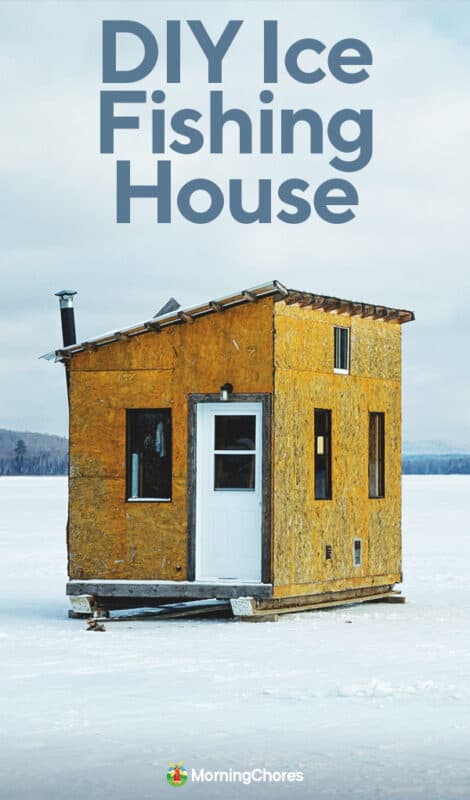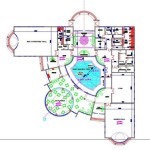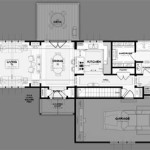Portable Ice Fishing Shelter Plans: A Comprehensive Guide
Ice fishing, a popular winter activity for many, demands adequate shelter from the harsh elements. Portable ice fishing shelters offer a practical solution, providing warmth and protection against wind, snow, and freezing temperatures. These shelters, often referred to as ice shanties or ice huts, are designed for portability, allowing anglers to easily move and reposition themselves on the ice to locate optimal fishing spots. This article explores the diverse range of portable ice fishing shelter plans, detailing their features, construction considerations, and factors to consider when selecting a suitable plan.
Types of Portable Ice Fishing Shelter Plans
Portable ice fishing shelters can be broadly categorized based on their structural design and setup mechanisms. Understanding these categories is crucial for selecting a shelter plan that aligns with individual needs and preferences.
Flip-Over Shelters: These shelters are characterized by their integrated sled base and collapsible frame. The fabric shelter is permanently attached to the sled, allowing for quick setup and takedown. The angler sits inside the sled, protected by the fabric shelter which flips over to enclose the fishing area. Flip-over shelters are popular for their ease of use and portability, making them well-suited for solo anglers or small groups.
A typical flip-over shelter plan will detail the dimensions of the sled, the frame material (usually aluminum or steel), the fabric type (typically insulated nylon or polyester), and the hinge mechanisms that allow the shelter to flip up and down. The plan may also include instructions for adding accessories, such as seats, rod holders, and lighting systems.
Hub Shelters: Hub shelters utilize a central hub mechanism that expands the shelter into a dome-like structure. These shelters are known for their spacious interiors and relatively lightweight design. They pack down into a compact size for easy transportation and are ideal for accommodating larger groups of anglers. The setup process involves pulling out the hub mechanisms to extend the shelter walls, which are typically made of insulated fabric.
Hub shelter plans often focus on the design of the hub mechanism itself, which is a critical component for the structural integrity of the shelter. The plans will specify the materials and dimensions required for the hub, as well as the attachment points for the fabric walls and roof. Plans also include instructions for reinforcing the corners and edges of the shelter to withstand wind and snow loads.
Pop-Up Shelters: Similar to hub shelters, pop-up shelters utilize a pre-assembled frame that allows for rapid setup. They typically feature a spring-loaded mechanism that automatically expands the shelter into its full shape. Pop-up shelters are a convenient option for anglers who prioritize speed and simplicity in setup.
Pop-up shelter plans emphasize the design of the spring-loaded frame, which must be both durable and flexible. The plans may include detailed drawings of the frame components, as well as instructions for assembling the mechanism. The fabric shell of a pop-up shelter is usually lightweight and water-resistant.
Frame Shelters: Frame shelters consist of a separate frame made of metal or wood and a fabric cover that is attached to the frame. These shelters offer a more customizable option, allowing anglers to design the frame to their specific requirements. Frame shelters can be built to accommodate various sizes and configurations. They can also be more robust and durable than other types of portable shelters.
Frame shelter plans provide detailed instructions for constructing the frame, including the dimensions of the frame members, the angles of the joints, and the method of fastening the pieces together. The plans will also specify the type of fabric to use for the cover, as well as the attachment methods for securing the fabric to the frame. These shelters often require more DIY skills to construct, but offer greater customization for the user.
Key Considerations for Selecting a Portable Ice Fishing Shelter Plan
Choosing the right portable ice fishing shelter plan requires careful consideration of several factors, including the intended use, the number of anglers, the environmental conditions, and the budget. Evaluating these factors will help ensure that the selected plan meets the specific needs of the angler.
Size and Capacity: The size of the shelter should be proportionate to the number of anglers who will be using it. A larger shelter will provide more space for movement and comfort, but it will also be heavier and more difficult to transport. Consider the typical number of people who will be fishing together and choose a shelter plan that can comfortably accommodate them. The plan should provide dimensions for the footprint of the shelter, as well as its height and interior space.
Portability and Weight: Portability is a crucial factor, especially for anglers who frequently move between fishing spots. Lighter shelters are easier to carry and transport, but they may also be less durable. The plan should specify the weight of the completed shelter, as well as its packed dimensions. Anglers should also consider the ease of setup and takedown when evaluating portability.
Insulation and Weather Resistance: Insulation is essential for maintaining a comfortable temperature inside the shelter, especially in extremely cold conditions. Insulated shelters typically feature multiple layers of fabric with a layer of insulation in between. Look for shelter plans that specify the R-value of the insulation material. Weather resistance is also important for protecting against wind, snow, and rain. The fabric should be waterproof or water-resistant, and the seams should be sealed to prevent leaks.
Durability and Materials: The durability of the shelter depends on the quality of the materials used in its construction. Look for plans that specify durable frame materials, such as aluminum or steel, and high-quality fabric, such as insulated nylon or polyester. The plan should also include instructions for reinforcing stress points, such as the corners and seams. It is important to ensure the materials selected can withstand the rigors of ice fishing environments.
Ventilation: Proper ventilation is crucial for reducing condensation and preventing carbon monoxide buildup, especially when using a propane heater inside the shelter. Look for plans that include ventilation openings, such as windows with adjustable vents or roof vents. Good ventilation will help to maintain a healthy and comfortable environment inside the shelter. The plan should specify the size and location of the ventilation openings and ensure they are adjustable.
Ease of Setup and Takedown: The ease of setup and takedown is a significant factor, especially in cold weather when dexterity may be limited. Flip-over and pop-up shelters typically offer the fastest setup times, while frame shelters may require more time and effort. Consider the complexity of the setup process when selecting a shelter plan. Ideally, a single person should be able to set up and take down the shelter quickly and easily.
Anchoring Systems: Ice fishing shelters must be securely anchored to the ice to prevent them from being blown away by the wind. Most shelters come with ice anchors or stakes that are driven into the ice. The plan should specify the type and number of anchors required, as well as the method of attaching the anchors to the shelter. Some shelters also feature skirts that can be buried in the snow for added stability. Properly anchored shelters are essential for safety, especially during windy conditions.
Essential Components of a Portable Ice Fishing Shelter Plan
A well-designed portable ice fishing shelter plan should include detailed information about the dimensions, materials, construction techniques, and assembly procedures. The plan should be easy to understand and follow, even for individuals with limited construction experience.
Detailed Drawings and Diagrams: The plan should include accurate and detailed drawings and diagrams that illustrate the dimensions of the shelter, the layout of the frame, and the placement of all components. The drawings should be clear and easy to read, with labeled measurements and annotations. Detailed diagrams are essential for understanding the construction process and ensuring that the shelter is built correctly. 3D models can also provide an even clearer visualization.
Materials List: A comprehensive materials list should specify the type, quantity, and dimensions of all the materials required to build the shelter, including the frame materials, the fabric, the fasteners, and any other necessary components. The materials list should also include information about where to purchase the materials and the estimated cost. This helps in budgeting and allows the DIY builder to source all required equipment at the outset of the project.
Step-by-Step Instructions: The plan should provide clear and concise step-by-step instructions that guide the user through the entire construction process, from cutting and assembling the frame to attaching the fabric and installing the anchors. The instructions should be written in simple language and accompanied by illustrations or photographs that show each step in detail. This is what transforms the plan from a simple set of drawings to a useful guide for the creation of a shelter.
Safety Precautions: The plan should include a section on safety precautions that outlines the potential hazards involved in building and using the shelter. The safety precautions should cover topics such as working with tools, handling materials, and using heaters inside the shelter. Following the safety precautions will help to prevent accidents and ensure that the shelter is built and used safely. These precautions may include wearing appropriate safety gear, such as eye protection and gloves, and working in a well-ventilated area.
Optional Features and Modifications: The plan may also include information about optional features and modifications that can be added to the shelter, such as windows, doors, rod holders, and lighting systems. These optional features can enhance the comfort and convenience of the shelter. The plan should provide clear instructions on how to install these features. Modifications can be adapted to suit particular needs, improving the versatility of the shelter.
Ultimately, a well-executed portable ice fishing shelter plan provides the foundation for a safe, comfortable, and productive ice fishing experience. By carefully considering the various types of shelter plans, evaluating individual needs, and selecting a plan that includes all the necessary components, anglers can ensure that they have the right shelter for their fishing adventures.

How To Build A Diy Ice Fishing Shelter On Budget The Best 150 Shanty Ever Pride News

How To Build A Diy Ice Fishing Shelter On Budget The Best 150 Shanty Ever Pride News

Ice Fishing S Plans

Diy Ice Fishing Hut

Portable Ice Shanty Plans Myoutdoorplans

How To Build An Ice Fishing House On A Budget

Angling For Warmth In Winter 21 Ice Fishing Hut Designs Weburbanist

4x8 Ice S Plans Myoutdoorplans
Bwca Homemade Portable Collapsible Ice Hut Boundary Waters Fishing Forum

How To Build An Ice Fishing House On A Budget








